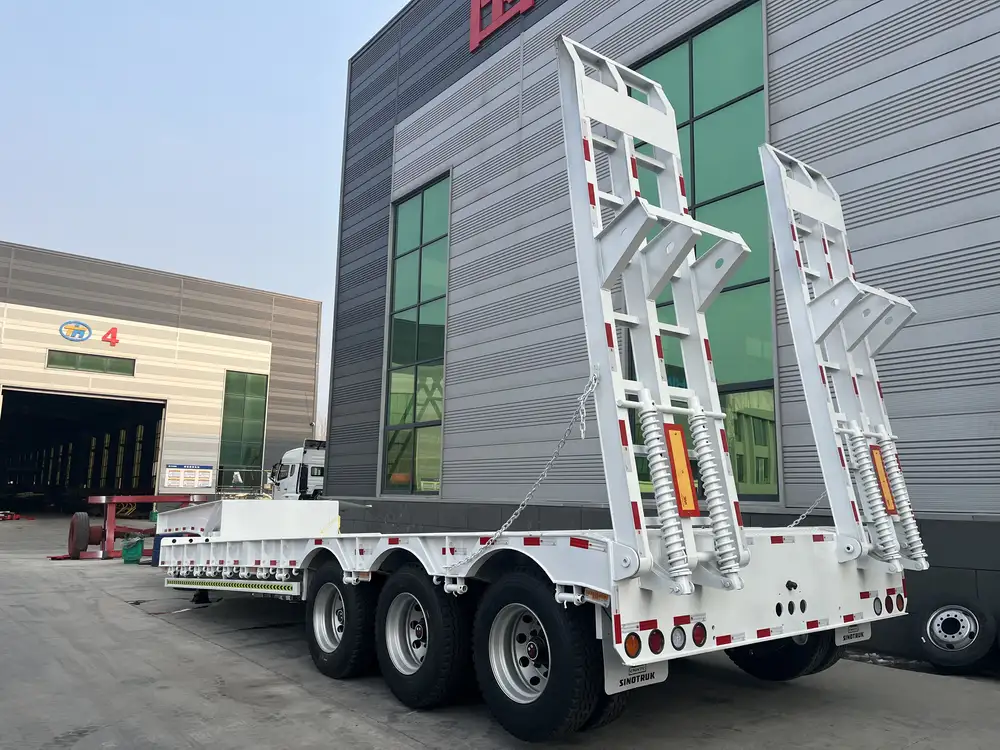Introduction to Gas Truck Fuel Capacities
When navigating the complexities of the trucking industry, one crucial aspect is the fuel capacity of gas trucks. How much fuel does a gas truck hold? This inquiry is fundamental not just for manufacturers and commercial entities but also for fleet management, logistical planning, and operational efficiency. Grasping fuel capacities can lead to informed decisions that can influence everything from budgeting to route planning.
What Determines Fuel Capacity?
Before diving into specific comparisons, let’s dissect the factors that govern the fuel capacity of gas trucks:
- Truck Size and Configuration: The physical dimensions of the truck and its fuel storage design directly affect how much fuel it can carry.
- Engine Type and Performance Requirements: Different engines have varying demands for fuel, influencing tank size.
- Load Requirements: Trucks designed for heavier loads often have larger fuel tanks for extended runs without refueling.
- Regulatory Standards: Compliance with regulations can dictate maximum fuel tank size, particularly for vehicles operating within certain jurisdictions.

Typical Fuel Capacities: A Comparative Overview
To provide a clearer perspective, let’s explore various types of gas trucks and their average fuel capacities. Below is a comprehensive table detailing the fuel tank sizes common in the industry.
| Type of Truck | Average Fuel Capacity (Gallons) | Specifications |
|---|---|---|
| Light-duty Pickup | 20 – 30 | Commonly smaller, suitable for personal use. |
| Medium-duty Truck | 30 – 50 | Designed for local deliveries; moderate capacity. |
| Heavy-duty Truck | 50 – 100 | Used for long hauls; larger tanks allow for extended travel. |
| Commercial Gas Trucks | 40 – 75 | Engineered for efficiency and operational longevity. |
The Importance of Knowing Fuel Capacity
Understanding how much fuel a gas truck holds is not merely academic; it has practical implications:
- Operational Efficiency: Knowing the fuel capacity facilitates optimal route planning, minimizing downtime caused by refueling.
- Cost Management: Accurate fuel estimates help prevent overexpenditure, ensuring that fleet operators adhere to budgets.
- Environmental Considerations: Understanding fuel capacity can also contribute to sustainability efforts by allowing operators to plan for more efficient fuel consumption.
How Fuel Capacity Affects Mileage and Economy
Fuel capacity’s significance does not end at mere numbers; it greatly influences fuel economy and mileage, which deserve thorough examination.
- Fuel Economy: The miles driven per gallon (MPG) can often fluctuate based on load weight, road conditions, and driving styles. A truck’s fuel tank determines the maximum range between fill-ups, impacting operations when paired with fuel economy.
Calculating Maximum Range: To calculate how far a truck can go on a full tank, one can use the formula:
[ \text{Maximum Range} = \text{Fuel Capacity (Gallons)} \times \text{Fuel Economy (MPG)} ]For instance, if a heavy-duty truck has a fuel capacity of 75 gallons and an average fuel economy of 6 MPG, its maximum range is:
[ \text{Maximum Range} = 75 \times 6 = 450 \text{ miles} ]

Factors Influencing Fuel Economy in Gas Trucks
Several external and internal factors can affect the fuel economy of a gas truck:
- Tire Pressure: Properly inflated tires can improve overall fuel efficiency.
- Weather Conditions: Adverse weather can increase fuel consumption due to changes in driving patterns and conditions.
- Traffic Conditions: Stop-and-go scenarios diminish fuel efficiency compared to smooth highway driving.
- Weight Load: Heavier loads require more energy, affecting fuel economy.
Fuel Capacity Innovations: What’s on the Horizon?
Innovation plays a crucial role in shaping the future of fuel storage and efficiency, impacting gas truck manufacturers:
- Advanced Fuel Tank Designs: New materials and shapes allow for larger fuel capacities without compromising truck design.
- Hybrid and Alternative Fuel Solutions: Trucks incorporating hybrid systems or alternative fuels (like biodiesel) offer different fuel strategies and capacities.
- Telematics and Data Analysis: Advanced tracking technology that monitors fuel use and truck performance can provide insights leading to improved operational efficiency.
Estimating Fuel Costs: A Practical Guide
Fuel costs are a significant part of truck operating expenses. Understanding fuel capacity ties directly into estimating fuel costs. Here is a simple breakdown to illustrate how to calculate estimated costs based on fuel tank size and fuel price.

Example Calculation
Assuming you have a gas truck with:
- Fuel Capacity: 75 gallons
- Fuel Price: $4 per gallon
Total Fuel Cost for a Full Tank: [ \text{Total Fuel Cost} = \text{Fuel Capacity} \times \text{Fuel Price} ] [ \text{Total Fuel Cost} = 75 \text{ gallons} \times 4 \text{ dollars/gallon} = 300 \text{ dollars} ]
Regular Monitoring
Regularly monitoring fuel prices and consumption patterns will enable trucks to stay within budget and adapt route plans for cost savings.
Conclusion: The Criticality of Fuel Capacity in Trucking
In summary, understanding how much fuel a gas truck holds is a fundamental aspect of efficient fleet management and operation within the transportation industry. With varying fuel capacities, from light-duty pickups to heavy-duty trucks, this knowledge empowers manufacturers, fleet operators, and drivers alike to make informed decisions for enhanced efficiency, cost management, and sustainability.
To remain competitive and optimize operational efficiency, stakeholders in the trucking sector must keep abreast of developments and innovations in fuel storage and usage. Adopting a comprehensive approach that encompasses fuel economy, capacity optimization, and cost management will ensure that operations thrive in a demanding and ever-evolving landscape.



